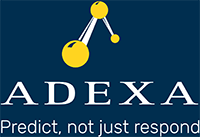Design and Operate your Supply Chain with Natural Disasters in Mind
It is impossible to control weather patterns and prevent natural disasters, however millions of dollars can be saved by making timely decisions based on available information to predict and minimize the potential impact. Predicting the likelihood of events helps us to make real-time, short term and medium term decisions to minimize the impact of events. Even when an event has already occurred, having the ability to respond fast enough and learn from it, can help both the top line and bottom line significantly.
Imagine forecasting just a few weeks ahead taking into account the likelihood of severe weather in a certain region knowing that there are customers/suppliers in that region or in the path of a transportation route for deliveries. What if you were notified in advance of the possibility of union workers strike in a region or perhaps regional conflicts as we have seen recently? Tariffs, and other socioeconomic and geopolitical events may also be predicted a few weeks or a few months ahead of time and their potential impact on natural resources such as oil, metal and other commodities can be assessed. Having the ability to change course in your supply chain, in a time-critical manner, to account for such occurrences can put you way ahead of the competition. This kind of capability requires both real-time data as well as historical data, both of which are currently available, to sense, act and learn from each event and be even more prepared for the next one. This is what Adexa Genies© are designed for.
Data can come in many forms: the actual or potential incident, its location(s), severity and urgency of the event, and its relevance to your operations. Minimizing the impact can be relatively simple once we have good information and the ability to make fast and good decisions. My solar panels stop excessive use of the batteries when an alert is received due to severe weather approaching. Saving the charge or its “inventory” for a potential disaster! In supply chains, we can change the mix of products based on what is and can be made available, increase or decrease inventories in different regions and products, save capacity (virtual inventory) for unforeseen but likely disruptions.
Extreme cold or hot temperatures, hurricanes, tornadoes, floods, tycoons, blizzards and many other natural conditions can create havoc. However, many can be anticipated and/or their likelihood evaluated. Let’s examine how. There are two distinct approaches. First approach is knowing the likelihood of an event in the future. The closer we get the better our information and confidence. This is accomplished using AI/ML techniques to examine patterns that are likely to bring about the event. This is of course based on existing data as well as real-time data coming from streaming sources. A combination of the above provides information with a certain amount of confidence regarding the occurrence of the event. This information is then examined in the context of its potential impact on the business. For example, presence of big or small customers/suppliers in the region, financial implications of the disruptions and of course alternatives that are available in order to change course. All of the above requires a true digital twin of the supply chain and intelligence to interpret the impact and offer suggestions to the end users; such as reserving material inventory, reserving capacity, changing the mix or quantities of production and so on. The second scenario is that the event has already occurred and an alert was received as to the severity and location of the event. Covid 19 is a good example of this; another one is the Colonial pipeline cyber attack. Having a digital twin allows management to know what options they have in changing the production mix, or reduce volume because the expected demand is expected to diminish, find alternative suppliers or plan & produce based on the price of commodities used. Abrupt changes in oil prices in recent months is an example of an event that behooves management to look into planning for profitability by changing the product mix or quantity, based on changes in oil price. We have also seen trade issues leading to sanctions and tariffs in certain regions that require the same course changes in supply chains.
Today we have the technology to predict most events and more importantly interpret their impact, if any, and for the system to learn from it to become smarter every time it happens. But we can do more! There are many underlying patterns in supply chains that are not detectable, without the use of the right system, until they cause an issue that could have been prevented. Examples are supplier changes in behavior and lead-times, trends in carbon emission of the entire supply chain, changes in resource efficiencies, hidden inventory excesses that keep growing and so on. Such trends can be easily detected and corrected by systems which are intelligent enough to take the existing and available data and be able to interpret them and draw conclusions to inform the management. As the business grows, the systems keep growing using self-correcting, self-improving and self-optimizing techniques in supply chain planning technology. For more information on the above strategies click Here.



